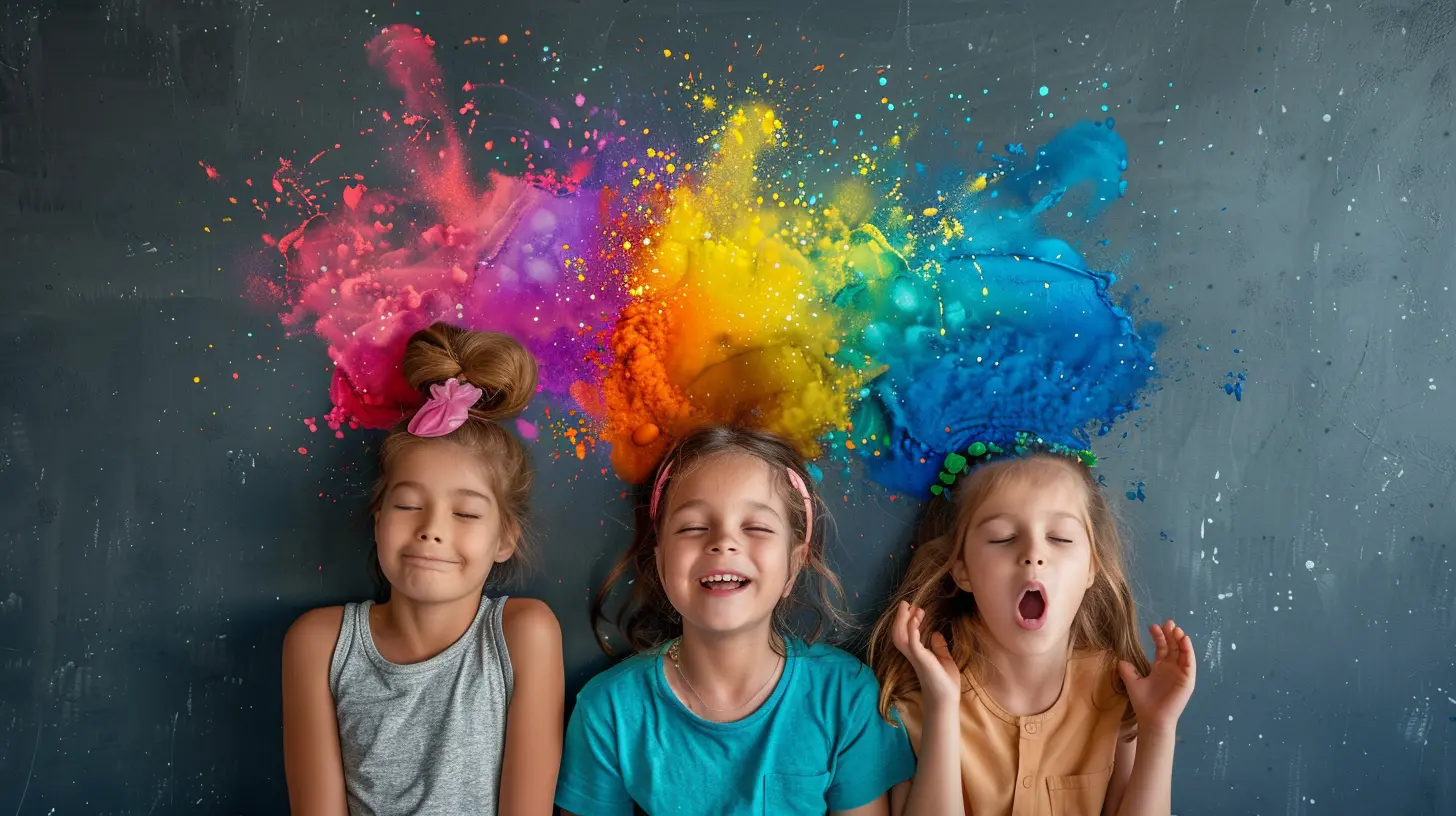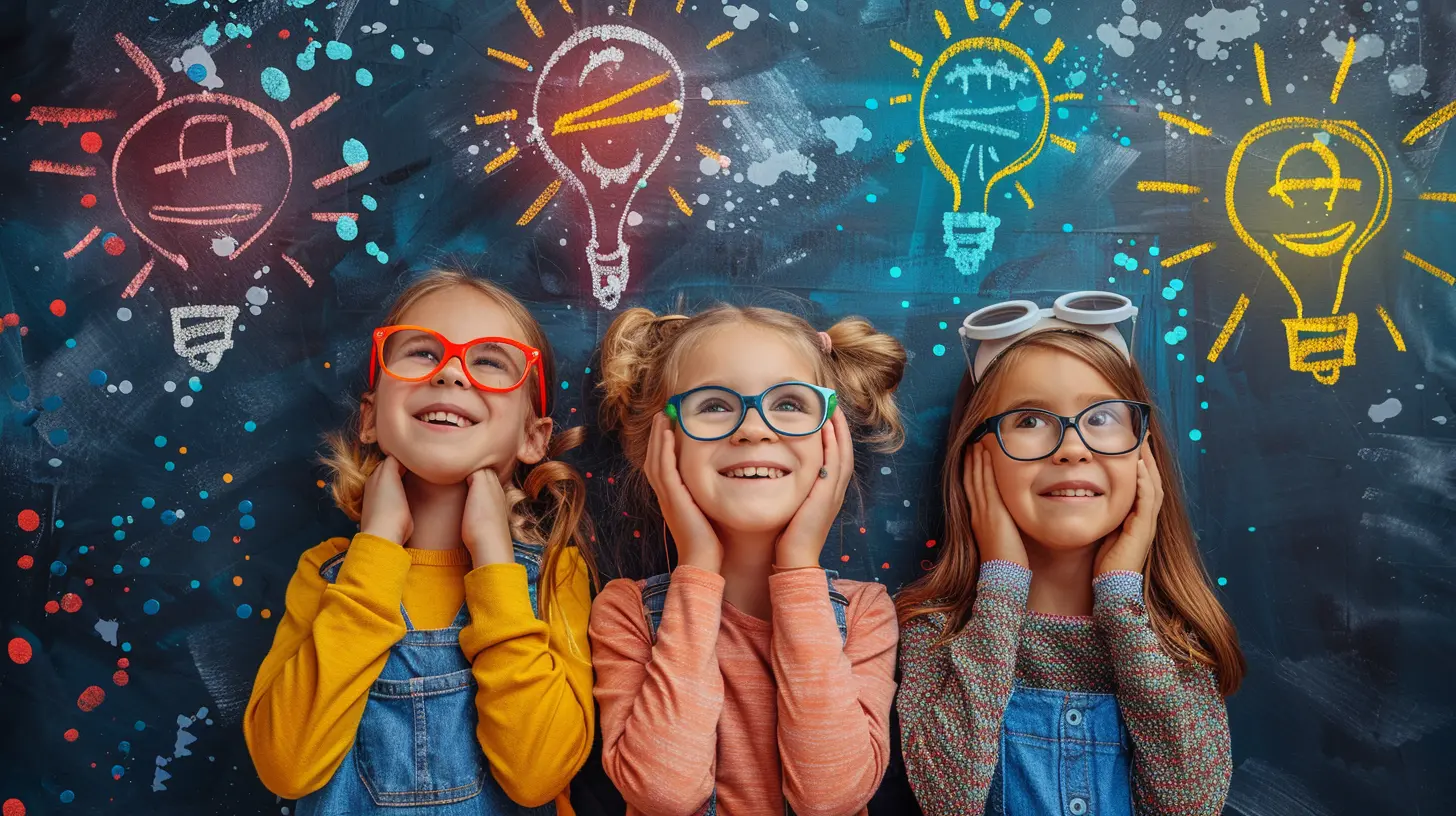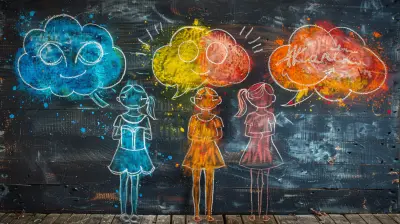The Benefits of Multisensory Learning for All Styles
2 November 2025
Education isn't one-size-fits-all. Some folks learn best by reading, others by listening, and some by physically engaging with the material. But what if you could combine all these methods for a richer, more effective learning experience? Enter multisensory learning—a powerful approach that enhances understanding, reinforces memory, and makes learning more engaging.
Whether you're a visual, auditory, or kinesthetic learner, incorporating multiple senses in education can supercharge your ability to retain and apply information. So, let's dive deep into why multisensory learning works, how it benefits different learning styles, and how you can use it to maximize learning potential.

What Is Multisensory Learning?
Multisensory learning is an educational approach that engages more than one sense at a time—sight, sound, touch, movement, and even smell or taste in some cases. Instead of just reading a textbook or listening to a lecture, multisensory learning combines visual, auditory, and kinesthetic elements to create a holistic learning experience.For example, instead of merely reading about the solar system, a student might:
- See a diagram (visual)
- Hear an explanation (auditory)
- Build a model of the planets (kinesthetic)
This method isn’t just engaging—it’s scientifically proven to enhance memory, understanding, and problem-solving skills. 
Why Does Multisensory Learning Work?
At its core, the brain thrives on connections. When you engage multiple senses, you're essentially creating more neural pathways to process and store information. Think of it like saving a file on multiple devices—you have more ways to access it later.1. Strengthens Memory Retention
Have you ever noticed that a song from years ago can suddenly pop into your head? That’s because music stimulates multiple areas of the brain, making it easier to recall. The same principle applies to learning—when more senses are engaged, information gets stored in different parts of the brain, making it easier to retrieve later.2. Engages Different Types of Learners
Not everyone learns the same way. Some students grasp concepts better by seeing them, while others need to hear or touch to fully understand. Multisensory learning ensures that no one is left behind by catering to different learning styles.3. Encourages Active Learning
Passive learning (just listening or reading) can be tedious. But when students interact with the material—whether by drawing, acting out a concept, or using hands-on tools—they become active learners. This increases engagement and makes learning more effective and fun.4. Boosts Problem-Solving Skills
When students use multiple senses to absorb information, they think critically and make connections they might not have made otherwise. This approach enhances problem-solving abilities, which are essential for real-world applications.5. Reduces Learning Barriers
For students with learning difficulties, such as dyslexia or ADHD, traditional approaches can feel frustrating. Multisensory learning provides alternative ways to process information, making education more inclusive and effective for diverse learners.
Multisensory Learning for Different Learning Styles
Everyone has a preferred learning style, but integrating all senses can enhance understanding for all types of learners. Let’s break it down:1. Visual Learners
Visual learners absorb information best through images, diagrams, and charts. They benefit from:- Mind maps and infographics to visualize connections
- Videos and animations for complex concepts
- Color-coded notes to improve organization and recall
2. Auditory Learners
Auditory learners process information best through listening and speaking. They thrive with:- Lectures and discussions where they can hear concepts explained
- Podcasts and audiobooks as alternative learning sources
- Rhymes, songs, or chants to memorize information
3. Kinesthetic Learners
Kinesthetic learners learn best through movement and hands-on activities. They benefit from:- Role-playing and acting out scenarios to engage with concepts
- Building models or using manipulatives to understand abstract ideas
- Using hand gestures or movement while studying to reinforce learning
4. Reading & Writing Learners
Some learners grasp concepts best through reading and writing. For them, multisensory learning can still help by integrating:- Writing essays or summaries to reinforce learning
- Using whiteboards or digital tools to combine writing with visuals
- Teaching others to solidify understanding through active recall

How to Incorporate Multisensory Learning
You don’t have to be in a classroom to enjoy the benefits of multisensory learning. Whether you’re teaching kids, studying for an exam, or just trying to retain new information, here are some practical ways to incorporate multisensory techniques:1. Combine Visuals with Text
Instead of just reading a book, watch related videos, create flashcards with images, or sketch out concepts. This reinforces information in multiple ways.2. Use Hands-On Activities
Try building models, writing notes by hand, or experimenting with real-life applications. Learning about geometry? Use LEGO bricks to visualize shapes and angles.3. Engage in Discussions & Teaching
Explaining a concept to someone else forces you to process and restructure the information in your own words. This is a powerful multisensory technique.4. Add Movement to Learning
Walking while reciting information or using gestures while studying can help retain information better. Ever noticed how teachers use hand movements while explaining? That's multisensory learning at work!5. Utilize Music & Sound
Turn facts into songs or rhymes, listen to educational podcasts, or use background music to stimulate focus. Music engages the auditory and emotional centers of the brain, making it an effective learning tool.6. Make Learning Interactive
Use quizzes, puzzles, and games to reinforce concepts. Even coding and VR learning tools provide immersive multisensory experiences.The Future of Multisensory Learning
With the rise of technology in education, multisensory learning is evolving like never before. Virtual reality (VR), augmented reality (AR), and interactive apps are revolutionizing how we learn by providing fully immersive experiences. Imagine learning about ancient Rome by walking through a virtual Colosseum—that’s multisensory learning in action!Moreover, artificial intelligence (AI) is personalizing education, tailoring multisensory methods to individual learning preferences. The future of learning isn’t just reading and writing—it’s a full-bodied, interactive experience that engages all your senses.
Final Thoughts
Multisensory learning isn’t just a buzzword—it’s a game-changer for education. Whether you’re a visual, auditory, kinesthetic, or reading/writing learner, integrating multiple senses deepens understanding, improves retention, and makes learning far more engaging.So, the next time you're struggling to grasp something, think beyond just reading or listening. Draw it, say it out loud, act it out, or turn it into a song—because when learning involves more senses, it sticks with you longer.
Ready to transform the way you learn? Start incorporating multisensory techniques today!
all images in this post were generated using AI tools
Category:
Learning StylesAuthor:

Olivia Lewis
Discussion
rate this article
1 comments
Sari Fletcher
Multisensory learning enhances engagement and retention for everyone.
November 3, 2025 at 1:05 PM

Olivia Lewis
Absolutely! Multisensory learning caters to diverse learning styles, making the educational experience more engaging and effective for all students.


